#tate britain
Explore tagged Tumblr posts
Text
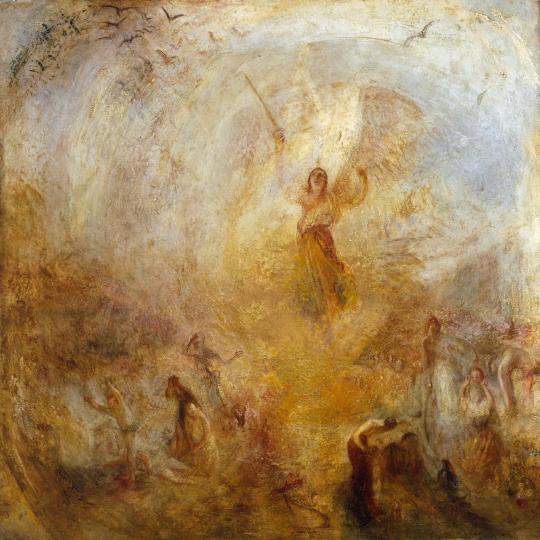
The Angel, Standing in the Sun, J.M.W. Turner, 1846
#art#art history#JMW Turner#J.M.W. Turner#Joseph Mallord William Turner#religious art#Christian art#angel#angels#sunlight#Romanticism#Romantic art#English Romanticism#British art#English art#19th century art#oil on canvas#Tate Britain
3K notes
·
View notes
Text
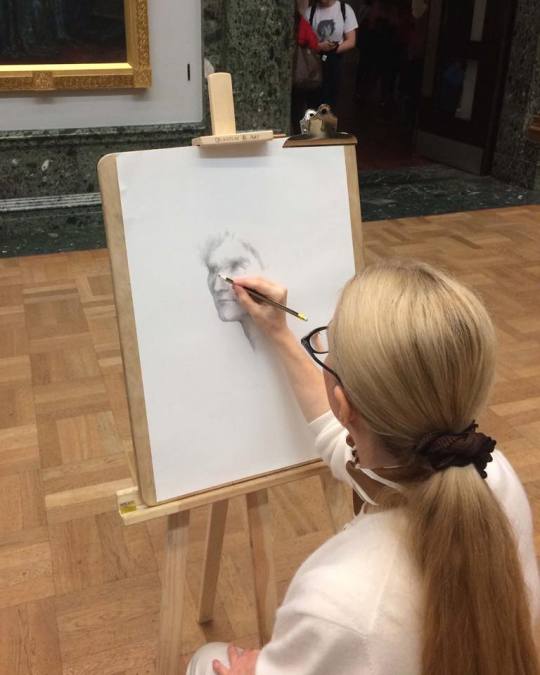
This photo of me drawing at the Tate Britain Museum in London was taken by my assistant and comic art restoration specialist Allan Harvey back in 2017 - when I still had hair.
I like to do studies of art while in museums, but sometimes I like to wig people out by drawing from my imagination, as I am doing here.
It was fun seeing people trying to figure out what I was copying when I wasn't actually copying anything.
Petty artist thrills. Good times.
I was sitting in front of William Holman Hunt's painting The Lady of Shallot.
4K notes
·
View notes
Text

Thomas Benjamin Kennington (1856-1916) "Orphans" (1885) Oil on canvas Social realism
#paintings#art#artwork#genre painting#genre scene#thomas benjamin kennington#oil on canvas#fine art#social realism#tate britain#english artist#british artist#portrait#portrait of a child#children#clothing#clothes#orphan#sad#tragic#sorrow#1880s#late 1800s#late 19th century\#a queue work of art
165 notes
·
View notes
Text

Christopher Richard Wynne Nevinson (British/English, 1889-1946) • A Studio in Montparnasse • exhibited 1926 • Tate, Britain
#art#fine art#painting#art history#christopher richard wynne nevison#british/English artist#british modernism#20th century british art#oil painting#tate britain#paintings of interiors#paris#paintings of domestic interiors#art nude#interior with figure#the painted room art blog#art blogs on tumblr#art lovers on tumblr
408 notes
·
View notes
Text

Augustus John (British/Welsh, 1878-1961) • Blue Cineraria • c. 1928. • Tate Britain
#still life#art#painting#fine art#art history#augustus john#british/welsh artist#floral still life#post impressionist#artwork#artist#oil painting#collection still life blog#art blogs on tumblr#art lovers on tumblr#tate britain
102 notes
·
View notes
Text

Balustrade, Tate Britain, 1 20 25, Photo by Joe Bruha, Copyright 2025
39 notes
·
View notes
Text

Life's Illusions
Artist: George Frederic Watts (British, 1817–1904
Date: 1840
Medium: Oil on canvas
Collection: TATE Britain
Description
Life's Illusions is an allegorical painting that explores the vanity of human desires. Watts believed that art should reveal the mystery of being, and he used universal symbols to represent life's emotions and aspirations.
#painting#allegorical art#life's illusions#oil on canvas#vanity of human desires#british art#symbolist movement#symbolism#oil painting#symbols#emotions#aspirations#male figures#female figures#george frederick watts#british painter#british culture#19th century art#artwork#european art#tate britain#19th century painting#pre raphaelite
44 notes
·
View notes
Text

The Minotaur
Artist: George Frederic Watts (British, 1817–1904)
Date: 1885
Medium: Oil paint on canvas
Collection: TATE Britain, United Kingdom
Description
In Greek mythology the Minotaur, half-man, half-bull, was appeased by annual human sacrifices. Every year, seven youths and seven virgins were shipped from mainland Athens to the Island of Crete to be devoured by the monster. In Watts's painting, the Minotaur leans out across the sea from a high parapet in anticipation of the ship's arrival. The yellow sunlight of the breaking dawn glints off the shoulder of the beast, accentuating his powerful body and catching the hairs of the tail that flicks out behind him. On the parapet, the Minotaur's large, hoof-like fist has crushed a small bird, a recognised symbol of the innocence and purity of youth.
#painting#mythological art#greek mythology#the minotaur#british culture#oil on canvas#artwork#half man-half bull#monster#sea#horizon#british painter#george frederic watts#british art#oil painting#fine art#tate britain#british symbolist painter#19th century painting#european art
31 notes
·
View notes
Text

The Good Samaritan
Artist: Joseph Highmore (English, 1692–1780)
Date: 1744
Medium: Oil paint on canvas
Collection: TATE Britain
Description
This painting illustrates the parable of the Good Samaritan from the Gospel of Luke. The Samaritan has bound the wounds of an injured man attacked by robbers and is helping him to his feet. Heading off into the distance behind them are the priest and the Levite, who have ignored the man’s plight. The painting was made for the aristocrat John Sheppard, possibly for a private chapel in his home at Campsey Ashe in Suffolk. This makes it a comparatively rare example of a sacred subject commissioned from a British artist by an independent patron, outside of the church.
#the good samaritan#jesus' parable#christianity#landscape#men#priet#levite#gospel of luke#narrative art#christian art#oil on canvas#oil painting#18th century painting#tate britain#joseph highmore#english painter#wounded man#english art#artwork#european art#bible story
39 notes
·
View notes
Text





JMW Turner:
Snow Storm - Steam-Boat off a Harbour’s Mouth, exhibited 1842
Whalers (Boiling Blubber) Entangled in Flaw Ice, Endeavouring to Extricate Themselves, exhibited 1845
Rough Sea, c.1840–5
A Wreck, with Fishing Boats, c.1840–5
Seascape with Storm Coming On, c.1840
All paintings displayed in Tate Britain, Room 35, "Toil and Terror at Sea".
57 notes
·
View notes
Text
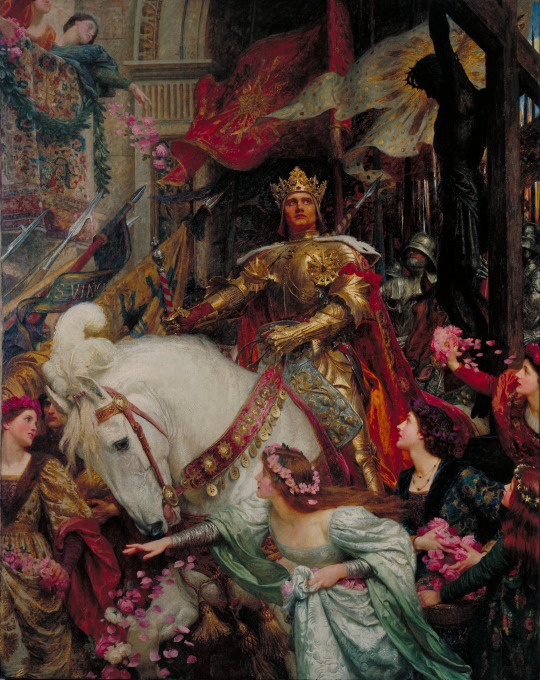
The Two Crowns, Frank Dicksee, 1900
#art#art history#Frank Dicksee#Sir Frank Dicksee#historical painting#Middle Ages#medieval#religious art#Christian art#Christianity#British art#English art#19th century art#Victorian period#Victorian art#oil on canvas#Tate Britain
3K notes
·
View notes
Text

Lady Jane Grey Prevailed on to Accept the Crown
Artist: Charles Robert Leslie (English, 1794–1859)
Date: Exhibited 1827
Medium: Oil paint on canvas
Collection: TATE, Britain
The Shortest Reign in British History
Lady Jane Grey was Queen of England for just nine days, from 10 July to 19 July 1553. She was proclaimed Queen as part of an unsuccessful bid to prevent the accession of her Catholic cousin, Mary Tudor. The great-granddaughter of Henry VII, Jane inherited the crown from her cousin Edward VI.
Jane arrived at the Tower of London to prepare for her coronation, but within a fortnight she was back as a prisoner of Mary I who had claimed the throne as rightfully hers. While Mary was reluctant to punish her at first, Lady Jane proved too much of a threat as the focus of Protestant plotters intent on replacing Mary.
On 12 February 1554, Lady Jane Grey was executed on Tower Green at the Tower of London. She was 17 years old.
#painting#lady jane grey#interior scene#men#costume#table#document#british history#oil on canvas#fine art#artwork#oil painting#british monarchy#charles robert leslie#english painter#european art#tate britain#19th century painting
22 notes
·
View notes
Text

Porsephine
Artist: Dante Gabriel Rossetti (English, 1828-1882)
Date: 1874
Medium: Oil on canvas
Collection: Tate Britain, London, United Kingdom
Description
In the classical myth Proserpine was kidnapped by Pluto, the god of the underworld, to be his wife. Eating food from the underworld would cause a living person to stay there forever. Proserpine ate six pomegranate seeds, and so Pluto confined her to his kingdom six months of each year. She is shown here eating a pomegranate which symbolises captivity. Jane Morris (née Burden) modelled for Proserpine. She was an embroiderer and artist’s model who was married to Rossetti’s friend William Morris and was also Rossetti’s lover.
#porsephine#painting#oil on canvas#classical mythology#female figure#pomegranate#symbolism#esmerald gown#wall plaque#foliage#english culture#artwork#oil painting#fine art#english painter#dante gabriel rossetti#british art#tate britain#19th century painting#european art
21 notes
·
View notes
Text

A Young Woman Playing the Harp
Artist: James Northcote (British, 1746–1831)
Date: 1814 (Exhibited)
Medium: Oil on canvas
Collection: TATE Britain
Description A Young Lady Playing the Harp, Exhibited 1814. Is an oil painting by the English artist and author James Northcote. It depicts a young harpist wearing a white dress tied with a long green sash, with a string of red beads around her neck. The harpist gazes forward, both hands raised to pluck the strings. She is seated against a rural backdrop dominated by a large, dark tree on the right, which frames her compositionally. The backdrop on the left, seen through the strings of the harp, features a twilit sky over hills and a lake.
#painting#oil painting#oil on canvas#young harpist#white dress#green sash#necklace#music#rubal backdrop#twilit sky#hills#lake#james northcote#genre art#british painter#artwork#european art#19th century painting#tate britain
23 notes
·
View notes
Text
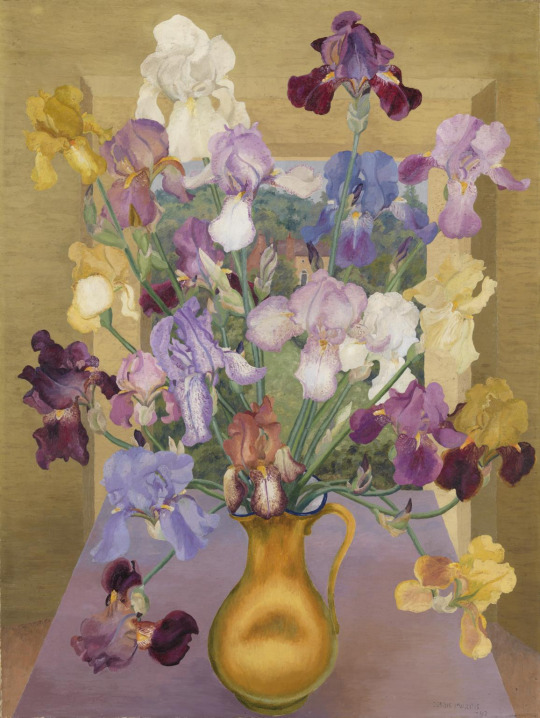
Cedric Lockwood Morris (British,1889–1982) • Iris Seedlings • 1943• Tate Britain
#art#painting#still life#fine art#art history#cedric morris#flower still life#british artist#british painter#art of the still life blog#20th century british art#oil painting#oil on canvas#artwork#tate britain#still life flowers#art and beauty#art blogs on tumblr
153 notes
·
View notes
Text
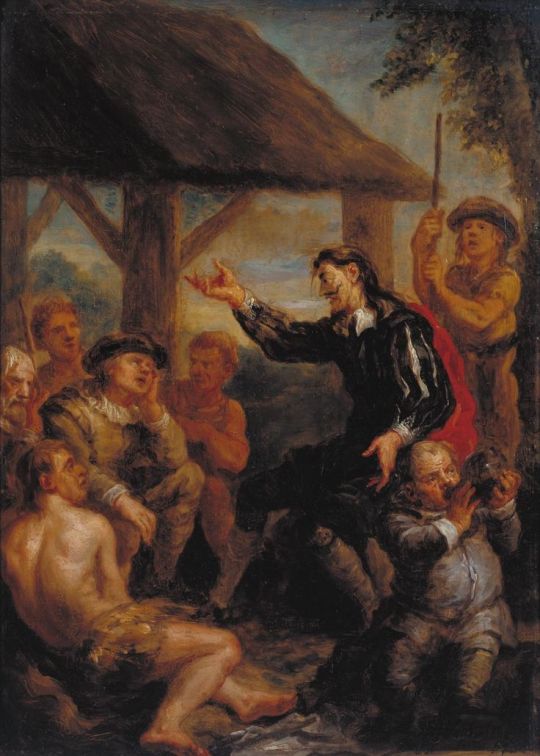
Don Quixote Addressing the Goatherds
Artist: John Vanderbank (English, 1694–1739)
Date: 1730
Medium: Oil paint on canvas
Collection: TATE Britain
Description
The panel is one of nearly forty similar scenes from 'Don Quixote' which Vanderbank painted during the 1730s. They are related to but not direct replicas of the more than sixty illustrations, begun in 1723, which the artist drew for an edition of Cervantes's novel published by Tonson in 1738.
Don Quixote, the full title being The Ingenious Gentleman Don Quixote of La Mancha, s a Spanish novel by Miguel de Cervantes. It was originally published in two parts, in 1605 and 1615. Considered a founding work of Western literature, it is often said to be the first modern novel. The novel has been labelled by many well-known authors as the "best book of all time" and the "best and most central work in world literature". Don Quixote is also one of the most-translated books in the world and one of the best-selling novels of all time.
For Cervantes and the readers of his day, Don Quixote was a one-volume book published in 1605, divided internally into four parts, not the first part of a two-part set. The mention in the 1605 book of further adventures yet to be told was totally conventional, did not indicate any authorial plans for a continuation, and was not taken seriously by the book's first readers.
#painting#literary scene#oil on canvas#landscape#men#don quixote de la mancha#spanish novel#spanish literature#miguel de cervantes#western literature#fine art#oil painting#hut#trees#foliage#costume#cloudy horizon#spanish culture#john vanderbank#english painter#european art#artwork#18th century painting#tate britain
18 notes
·
View notes